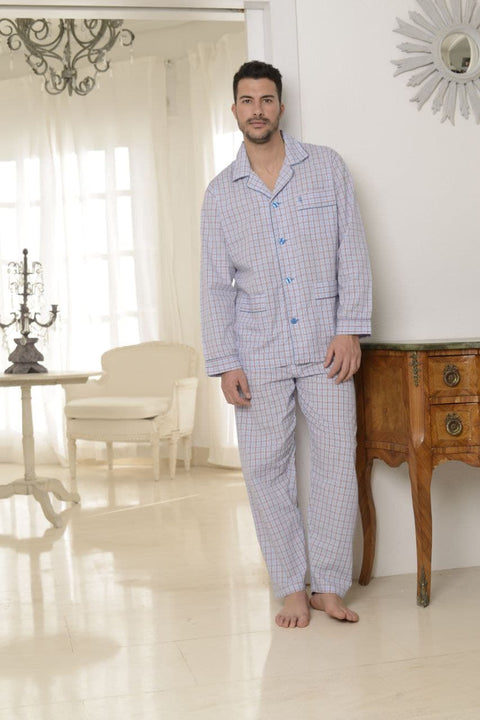The textile sector is one of the oldest fields in which humans have specialized. The need to produce fabrics to make different clothing arises from the search for protection against the various climates, temperatures, and environments in which humans have evolved.
The evolution of garments led to the development of a harmonious combination of colors and designs, maintaining the function of covering what is necessary, but attracting attention as a synonym of status, personality, originality, and character in the wearer. Thus, making garments beyond their utilitarian function became an activity that seeks to silently express what the wearer wishes to project about themselves.
Variety of Fabrics
In this way, there are garments for day and night, for cold and heat, for going out, going to work, staying at home, and for sleeping like with a good pajama. All designed with a specific purpose and with particular details that fulfill the function for which they were made; however, the design also includes the woven suitable for ensuring that comfort and its objective meet expectations.
As of today, there are various types of fibers that are commonly used, which can be natural, coming from vegetation, such as cotton, linen, or bamboo; of animal origin or protein-based like wool, angora, or silk. There are also artificial fibers created by humans or semi-artificial ones that share a natural origin but are obtained through a chemical process.
Tissue Distinction
There are different types of woven that exist for the making of everyday clothing, and thanks to the development of technology, a great variety of textiles has been created using fashion primarily for two goals; on one knit, to perfect the quality and the inherent characteristics of the garments such as softness, comfort, durability, elasticity, functionality, and other relevant elements for their design; on the other hand, the social duty to safeguard the environment in the manufacturing process.
In addition to quality, texture, and how it is desired to look aesthetically, when choosing the type of woven to use, factors such as the time of year in which the garment will be worn must be taken into consideration. In summer, a linen fabric could be ideal due to its freshness and the fact that it allows the skin to breathe; on the contrary, in a season like winter, wool becomes more ideal due to its thickness, warmth, and heat retention.
One of the most well-known, common, and preferred fabrics for making clothing is cotton. Its versatility allows it to be used for almost all types of garments such as: jackets, pants, shirts, or flannels. By combining it with other types of fabrics, complementary fabrics can be obtained such as gabardine, denim, poplin, or many others, and thanks to its plant origin, it tends to be quite economical, with highly soft fibers characterizing it as one of the best options in fabric on the market.
Nowadays, various brands have preferred to use organic cotton, as it is not exposed to fertilizers, toxic elements, and chemicals that could endanger the skin, making it a great option for sensitive skin. Furthermore, in this way, they participate in not promoting the use of materials that have been compromised by processes that, to reach the market, harm the environment and are therefore harmful not only to the health of the consumer but also to the farmers who cultivate and are up to date with toxic products.
Among other highly used and recommended fabrics is silk. Despite its cost, as it is obtained from silk worms, its attributes make it a good option to wear from an elegant shirt to a comfortable and refined pajama of excellent quality. As mentioned before, it is ideal for warm seasons due to its light thickness, allowing the skin to breathe freely.
Environmentally Friendly Fabrics
Considering that sustainable or ecological fashion is about creating clothing with environmentally friendly fabrics and fibers, if one follows the line of social responsibility to choose it, one can find Tencel Modal and Tencel Lyocell. It is an artificial fiber developed from cellulose pulp made from wood, but the difference between the two groups lies in their production, format, and certain intrinsic factors.
Both are quite thin fabrics, soft to the touch, with notable resistance and elastic recovery. In the same sense, they have good adaptability and drape. They are soft, cool, and silky, with a high percentage of absorption, color retention, and shine.
The reason to consider an ecological fiber is that it represents not only a healthy option, but also because it provides true comfort that allows for breathability or does not retain moisture. Positive changes can also be made through clothing, and if its benefit contributes to more than one individual and receives the same benefits, why not be part of that contribution? Furthermore, the dyeing process is also ecological.
Variety of Fabrics and Fibers
On the side of flexible fibers is polyamide, which is a synthetic woven with great resistance to deterioration, offering high durability with elastic recovery, meaning it has a good ability to maintain its shape, providing garments that do not change shape over time even with prolonged use.
Unlike other fibers, this one dries quickly, as it does not have high absorption. Thus, it is an option with a high level of resistance to microorganisms, which is why the microfiber of this woven considerably improves the tactile characteristics and allows for good control of humidity and temperature.
If you prefer more traditional fabrics, polyester is also a good option. With a synthetic origin and great resistance to wear from friction. It results in a woven that is very pleasant to handle and treat after use. It insulates heat and also has excellent resistance to microorganisms.
Knowing the variety of fabrics is important when choosing the clothes that will be worn until going to sleep. By having a clear understanding of the needs and comforts being sought, this knowledge is very useful for having a day as comfortable as possible.
One should not underestimate the power of a good woven alongside good tailoring; details such as which fiber to use on a sunny or rainy day, cold or hot, could save a hassle, as wearing any type of clothing should always be related to comfort, durability, and hygiene, even more so in a good pajama. Visit our website El Búho Nocturno where you will find the pajama that best suits your needs.

